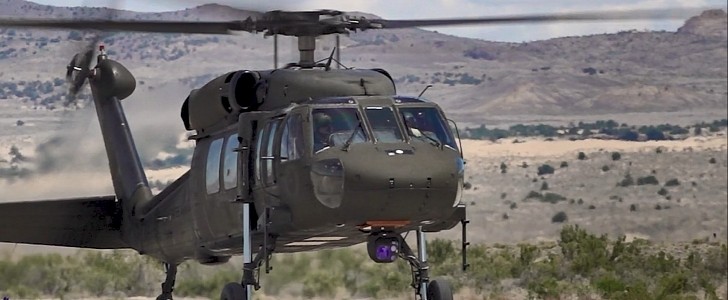As technology progresses, so are the systems used by the U.S. military in combat. Researchers are currently developing a feature that will improve weapon systems by incorporating automated scanning and detection of enemy targets.
Called the Full-Spectrum Targeting (FST), the program led by Army Futures Command (AFC) seeks to advance next-generation sensor technology in order to provide the aircraft with the standoff distance and speed needed to react faster than the enemy.
Developed by the C5ISR — the Army’s applied research and advanced technology development center — the new sensor technology has already been integrated into a Sikorsky UH-60 Black Hawk. The aircraft was used as a replacement for the Army’s Future Attack Reconnaissance Aircraft (FARA) at the Experimentation Demonstration Gateway Event (EDGE) that took place this month.
During an air assault exercise, the Black Hawk used its new technology to detect a target and send coordinates and images to the network. The target was successfully eliminated, and the results matched the expectations.
The Army’s final goal is to expand the view that the crew can see in the current reconnaissance aircraft and reduce the time to locate the enemy. So how exactly does this new tech work? According to Dr. Brian Thomas, chief of C5ISR Center’s Unmanned and Fixed Wing Branch, to detect the enemy’s location ahead, the system uses automatic scan-and-detect algorithms and looks for a defined region in front of the aircraft.
As a result, the sensors will give the aviator the opportunity to also serve as a mission commander. Furthermore, the target can be attacked almost instantaneously as the images will be received faster.
“This system will transform the weapons officer’s viewpoint from a soda straw to a wide-angle, high-definition view of the whole battlefield,” explains Thomas.
The FST program also involves research on day-and-night targeting capabilities, on all-weather, and on technologies that are able to detect hidden targets and distinguish decoys.
Developed by the C5ISR — the Army’s applied research and advanced technology development center — the new sensor technology has already been integrated into a Sikorsky UH-60 Black Hawk. The aircraft was used as a replacement for the Army’s Future Attack Reconnaissance Aircraft (FARA) at the Experimentation Demonstration Gateway Event (EDGE) that took place this month.
During an air assault exercise, the Black Hawk used its new technology to detect a target and send coordinates and images to the network. The target was successfully eliminated, and the results matched the expectations.
The Army’s final goal is to expand the view that the crew can see in the current reconnaissance aircraft and reduce the time to locate the enemy. So how exactly does this new tech work? According to Dr. Brian Thomas, chief of C5ISR Center’s Unmanned and Fixed Wing Branch, to detect the enemy’s location ahead, the system uses automatic scan-and-detect algorithms and looks for a defined region in front of the aircraft.
As a result, the sensors will give the aviator the opportunity to also serve as a mission commander. Furthermore, the target can be attacked almost instantaneously as the images will be received faster.
“This system will transform the weapons officer’s viewpoint from a soda straw to a wide-angle, high-definition view of the whole battlefield,” explains Thomas.
The FST program also involves research on day-and-night targeting capabilities, on all-weather, and on technologies that are able to detect hidden targets and distinguish decoys.

